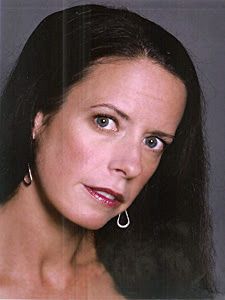
For those who just moved to the area from Chicago, New York or other sites of blistering June-August heat, be forewarned: Summer in the Bay Area is a complex state of mind. Every day the weather swings from giddy freewheeling sunshine (Palo Alto, Orinda) to bone-numbing fog (El Cerrito, Berkeley, parts of Oakland and outer regions of San Francisco), gray plumes of frigid moisture stomping in with high drama and setting the teeth chattering.
This is no benign, balmy damp; we're talking fog that requires travelers to stuff their backpacks or trunks with extra clothes, down jackets included. While you may think the lovely Stern Grove or Ocean Beach look like estimable sites for a picnic, when the witching hour hits and the clouds roll in, early afternoon becomes indistinguishable from 7 o'clock, and what seemed bucolic looks suddenly like the cold and creepy setting of a Hitchcock pic.
So how does a presenter conduct an arts festival in a place that, instead of a steady climate, has a manic-depressive season with no appropriate name?
Answer: He skips Shakespeare in the Park, brings most of the art inside, and acts as if it's fall.

Andrew Wood, a rangy English arts presenter who launched the long-needed San Francisco International Arts Festival five years ago, situated it late in spring — right after the wave of graduations, at the tail end of the large presenting organizations' seasons, and before locals leave in search of real summer. His goal: to bring the world to the Bay Area and have the Bay Area see the rich arts in its midst.
"The city is a great incubator, and many young artists from all over the country come here to live and learn about their craft," said Wood. "But sometimes San Francisco is seen as being isolated from the world's major art centers. So, as artists mature, they feel they have to leave in order to fulfill their potential." In other words, don't blame it on the fog.
Wood is committed not only to keeping the artists here but offering them new laboratories in which to explore. "We are trying to create an international platform for local artists to present their work as well as to develop a model that promotes international relationships."
This year Wood has organized 40 international and local artists, closing with Afro-Cuban maestro Omar Sosa playing live in Yerba Buena Center gardens June 8, a Sunday event free to the public.
Between now and then Wood has lined up maverick dance collaborations, such as local company paige starling sorvillo's Blindsight in league with Los Angeles artist Lucy HG and Australian composer Susan Hawkins in a work called "thirty-seven isolated events" (through Saturday). The dancemakers' task is to explore the seam between the virtual and the real. Even if their goals read like a page out of a postmodern critical theory text, you don't need a philosophy degree to understand that the dance is gutsy and real.
Then, on Saturday and Sunday, Brazilian solo artist Cristina Moura presents the California premiere of "like an idiot." Here Moura plays on the univeral experience of being a fool and uses her eclectic Brazilian-European training to explore the experience we can all grasp.
In June, daring local movers Scott Wells, Kate Foley, Rachel Lincoln, Leslie Seiters, Leyya Tawil, Jose Navarrete and Debby Kajiyama are also given platforms to pursue multicultural conversations. The recurrent themes — themes that plague us all in an era of war, globalization and declining resources —— are about identity, place and what we can and cannot know.
Details: San Francisco International Arts Festival through June 8. Various dates and times. Venues include Dance Mission Theater, 3316 24th St. (at Mission Street); Shotwell Studios, 3252-A 19th St. at Shotwell Street; Yerba Buena Center for the Arts Forum, 701 Mission St.; and CounterPULSE, 1310 Mission St. at Ninth Street. $20. 800-838-3006, www.sfiaf.org.
REGINALD RAY SAVAGE'S work may seem to have little to do with the experiments the San Francisco International Arts Festival
artists imbibe. But in reality, Savage and his Savage Jazz Dance Company have been quietly, radically questioning the parameters of dance since he founded his company in Oakland 16 years ago. At the center of his inquiry is the identity of "high" art and jazz's place in concert performance.

Savage was trained at the Katherine Dunham Performing Arts Training Center in East St. Louis and by the ballerina Ruth Page in Chicago, and he has a well-deserved East Bay following. This month he presents "OakTown: DownTown."
Music is the lightning rod for Savage, whether it is live or taped, and music keeps the company pushing the boundaries of its jazz-inflected movement style. For "OakTown: DownTown," Broadway hoofer and guest artist Alex Sanchez dives into jazz-tango fusion in his untitled premiere. Savage challenges himself with the experimental sounds of Alarm Will Sound in his latest work "Blue Calx," while Savage Company stalwart Maia Siani has choreographed a new work "Between Us" to the lyrical soul vocals of Maxwell.
Details: Savage Jazz Dance Company: 8 p.m. today and Saturday, 3 p.m. Sunday, Malonga Casquelord Center for the Arts, 1428 Alice St., Oakland, $10-15, 415-256-8499 or 866-558-4253, www.inticketing.com., www.savagejazz.org.
OAKLAND DANCE: The Fifth Oakland Dance Festival on June 21 and 22 has a lineup reminiscent of the first Bay Area dance festivals, one that fearlessly ranges across the dance spectrum agglomerating dance styles. On the opening night, June 20, it will creating mind-bending juxtapositions in rapid-fire succession when 12 companies fly across the stage in brief forays.
On tap are groups that range from mixed-abilities dancers, wacky movement theater performers, butoh dancers, East-West fusion artists to neoclassical ballet dancers (including guest appearances by San Francisco Ballet dancers Courtney Wright and Garrett Anderson).
Saturday's and Sunday's programs are more stately, with Company C Contemporary Ballet joining forces with ODC/Dance. But all in all, Oakland Dance Festival leaves the aesthetic and existential soul-searching for the other folks and engages in an old-fashioned variety show.
Details: Oakland Dance Festival, 8 p.m. June 20 and 21, 2 p.m. June 22, Malonga Casquelord Center for the Arts, 1428 Alice St., Oakland, $10 Friday, $20-$25 Saturday and Sunday, 925-708-0752.










 We see Stuart decked out in a suit sitting in a bright orange chair. It is a color that gives an Impressionist touch to the scene, accentuated by a plump and contented looking blue sky and white cloud projection behind. The world we are entering, though, is a post-post-post Impressionist dreamscape, the kind of place where Cezanne, Matisse and even Van Gogh exist as happy Brave New World distractions against disaster, where peaches, apples and starry nights are fake and there is no depth of field or horizon line to look toward. In fact, this is an absurd and dystopic reality, a weird claustrophobic place in which 19th century innocence is supplanted by psychosurgical disconnection.
We see Stuart decked out in a suit sitting in a bright orange chair. It is a color that gives an Impressionist touch to the scene, accentuated by a plump and contented looking blue sky and white cloud projection behind. The world we are entering, though, is a post-post-post Impressionist dreamscape, the kind of place where Cezanne, Matisse and even Van Gogh exist as happy Brave New World distractions against disaster, where peaches, apples and starry nights are fake and there is no depth of field or horizon line to look toward. In fact, this is an absurd and dystopic reality, a weird claustrophobic place in which 19th century innocence is supplanted by psychosurgical disconnection. 










 Smuin Ballet is also back, and with a new work by rising star Amy Seiwert,
Smuin Ballet is also back, and with a new work by rising star Amy Seiwert,  who has been steering the company in Michael Smuin's absence as he was priming her to do. Also on the program are Smuin's hot "Carmen," along with his much-loved "Dances with Songs."
who has been steering the company in Michael Smuin's absence as he was priming her to do. Also on the program are Smuin's hot "Carmen," along with his much-loved "Dances with Songs."























